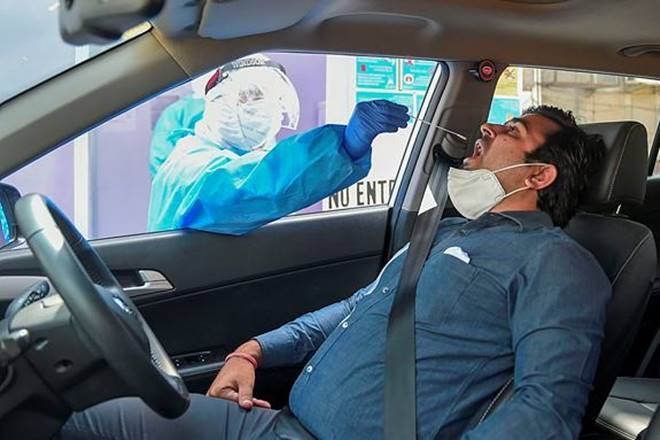New Delhi: It is estimated that the novel coronavirus will infect a maximum of three million people by October provided the ongoing third phase of lockdown till May 17 is ‘implemented strictly’. However, lack of strict implementation of the two previous phases of lockdown may possibly leave a staggering 171 million COVID-19 cases.
The startling revelation was made by a group of researchers at the Mumbai-based International Institute for Population Sciences (IIPS) who recently undertook a study on the possible spread of the virus in the country.
While releasing the projections, the scientists noted that the lockdown has succeeded in reducing the number of infections in India considerably.
According to the analysis, if the ongoing third phase of lockdown is implemented effectively and is extended until May 24, the reproduction rate of the virus is likely to become less than one (0.975) and if it is extended further till May 31, the RO will be 0.945. In such a scenario, the COVID-19 pandemic may begin to recede and number of infected cases would start declining. If this happens, less than 0.01% (0.14 million) of the country’s population is likely to be infected by July 2020.
Talking to the media, Professor Abhikhek Singh of IIPS said, “These estimates suggest that the two lockdowns have played a key role in reducing the number of (projected) peak infections by about 140 million.” The researchers came to this conclusion after analysing data on RO of infection before the lockdown and the following two phases of lockdown from March 25-April 14 and April 15 to May 3.
Nevertheless, if the third phase of lockdown does not produce requisite results and the RO of infections remains at what it was in the second phase of lockdown from April 15 to May 3, then the number of infected persons could go up to 20 million by October.
In the study, which was steered by researchers at the Department of Public Health and Mortality Studies at IIPS, pointed that the strategy of lockdown has contributed in flattening the curve of infection and may also reduce the burden of infection in India significantly.
Prior to the lockdown that was implemented May 25, the infection was spreading at a much faster rate (R0 = 1.862) and if the same situation had prevailed then an estimated maximum 12.9 % of the country’s population would have had COVID-19 disease by June 2020 first week. However, the R0 1.862 declined to 1.455 and 1.200 during the first and second lockdown periods respectively. The combined R0 for the two lockdown periods was 1.258. “For a given recovery rate (0.363), as R0 reduces from 1.862 to 1.200, highest estimated prevalence reduces from 12.9% to 1.5%. At the same time, the corresponding duration of pandemic increased from two months to more than 6 months,” the authors of the research paper pointed out.
Nevertheless, they noted that the COVID-19 case recovery rate in India is a matter of concern as it is lower compared to other nations. This may be due to the early stage of the infection in the country.
Agencies
